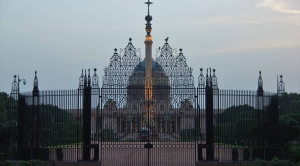India’s Response to Trump’s Tariffs: Expanding Export Markets and Boosting Local Demand

New Delhi, August 27, 2025 — India is preparing a comprehensive plan to mitigate the impact of steep tariffs imposed by the United States under President Donald Trump’s new trade policy. The 50 per cent tariff on a wide range of Indian exports threatens to hit labour-intensive industries like textiles, leather, gems and jewellery, and shrimp farming. With potential losses estimated at $48 billion, the government is working swiftly to diversify markets and strengthen domestic demand. High-Level Meetings in Next 72 Hours According to sources, the Commerce Ministry is set to hold a series of meetings within the next three days, bringing together industry leaders, trade representatives, and foreign counterparts. The goal is to create a roadmap to minimize disruption while finding new markets for Indian goods. The Federation of Indian Export Organisations has already warned of a “severe setback” to industries employing millions of workers if immediate action is not taken. Tapping Into 40 Key Markets A major part of the strategy involves outreach to 40 countries, including the United Kingdom, Japan, Australia, and several European nations. India’s textile and apparel sector alone exported $37 billion to the US in FY25. With tariffs now making Indian goods less competitive, these alternative markets are being prioritized. Collectively, they import $590 billion worth of textiles and apparel, offering India a chance to position itself as a “reliable supplier of high-quality, sustainable, and innovative products.” Industry Concerns: Leather, Gems, and Seafood The leather industry is among the hardest hit. Exporters from Agra, including footwear businessman Puran Dawar, expressed concern that unless new markets like France, Germany, and the UK are aggressively tapped, factories could face immediate slowdowns. The gems and jewellery sector, employing lakhs of workers, faces similar pressure. With tariffs rising from under 3 per cent to over 52 per cent, rival hubs like Türkiye and Thailand are expected to benefit. To offset this, India is looking to strengthen ties with Hong Kong, Belgium, and the UAE, which already import significant quantities of Indian jewellery. Shrimp farming in Andhra Pradesh is also vulnerable. India exported $2.4 billion worth of shrimp to the US in FY25, making up nearly a third of total exports. With tariffs expected to soar to 60 per cent, farmers fear widespread financial distress. Diversification into China, Spain, Japan, and the broader European Union is being urgently pursued. Beyond the West: Africa and Latin America The government is also focusing on Africa and Latin America. Trade with Africa is already valued at $100 billion, and the African Continental Free Trade Area Agreement (AfCFTA), signed in 2021, could further enhance opportunities. Similarly, trade with Latin America, which crossed $43 billion in 2023, is projected to hit $100 billion by FY28. Boosting Domestic Demand Alongside external measures, the government is also working to shield the economy from global shocks by encouraging local consumption. Plans are underway to reform the Goods and Services Tax (GST) framework to lower costs on essential items and big [27/08, 18:10] +91 98949 39396: India’s Trade Strategy After Trump’s Tariffs With the US imposing a 50% tariff on Indian exports, New Delhi is moving fast to safeguard its economy. The government is reaching out to 40 countries — including the UK, Japan, and EU nations — to diversify markets for textiles, leather, jewellery, and seafood. At the same time, plans are underway to boost domestic demand through GST reforms ahead of Diwali. While the hit could cost India $48 billion, officials are confident that stronger trade ties and local consumption will help absorb the shock.




